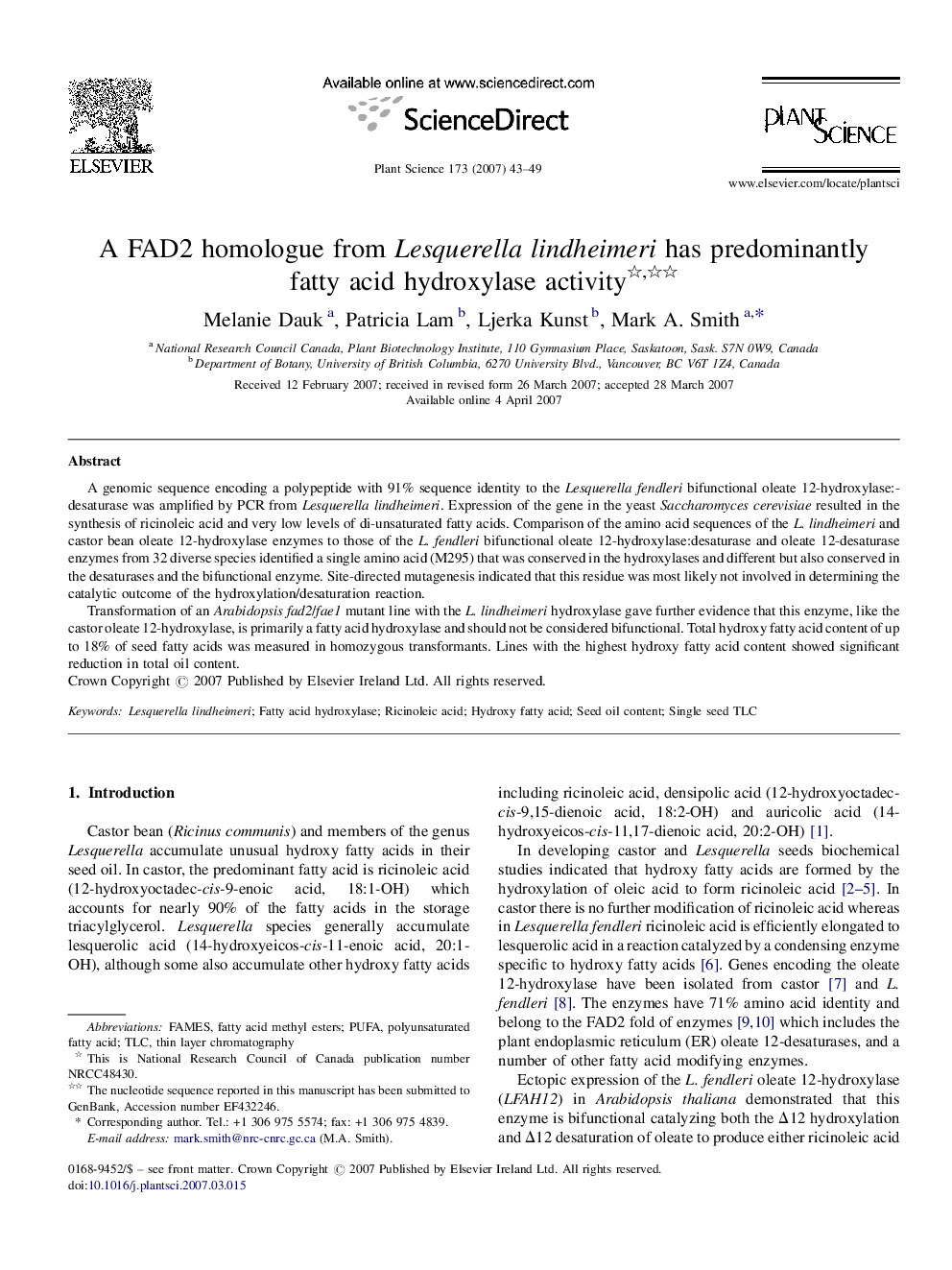| Article ID | Journal | Published Year | Pages | File Type |
|---|---|---|---|---|
| 2017998 | Plant Science | 2007 | 7 Pages |
A genomic sequence encoding a polypeptide with 91% sequence identity to the Lesquerella fendleri bifunctional oleate 12-hydroxylase:desaturase was amplified by PCR from Lesquerella lindheimeri. Expression of the gene in the yeast Saccharomyces cerevisiae resulted in the synthesis of ricinoleic acid and very low levels of di-unsaturated fatty acids. Comparison of the amino acid sequences of the L. lindheimeri and castor bean oleate 12-hydroxylase enzymes to those of the L. fendleri bifunctional oleate 12-hydroxylase:desaturase and oleate 12-desaturase enzymes from 32 diverse species identified a single amino acid (M295) that was conserved in the hydroxylases and different but also conserved in the desaturases and the bifunctional enzyme. Site-directed mutagenesis indicated that this residue was most likely not involved in determining the catalytic outcome of the hydroxylation/desaturation reaction.Transformation of an Arabidopsis fad2/fae1 mutant line with the L. lindheimeri hydroxylase gave further evidence that this enzyme, like the castor oleate 12-hydroxylase, is primarily a fatty acid hydroxylase and should not be considered bifunctional. Total hydroxy fatty acid content of up to 18% of seed fatty acids was measured in homozygous transformants. Lines with the highest hydroxy fatty acid content showed significant reduction in total oil content.
